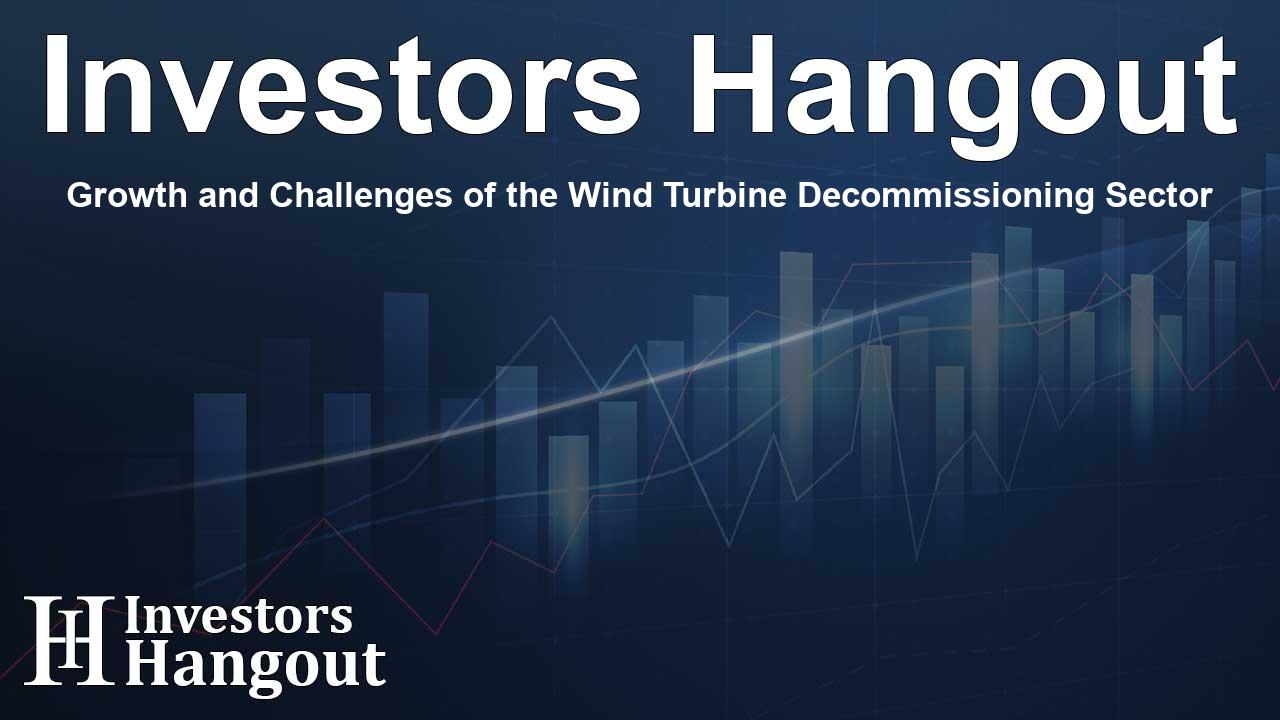Growth and Challenges of the Wind Turbine Decommissioning Sector

Wind Turbine Decommissioning Services Market Overview
The wind turbine decommissioning services market is on the brink of significant transformation as it aims to adapt to the increasing demand for sustainable energy solutions. As the renewable energy landscape evolves, the need for effective decommissioning services is becoming ever more critical. Reports suggest that this market is poised to grow by USD 2.23 billion between now and 2029, with a compound annual growth rate (CAGR) of 15.4%. This growth is primarily driven by the need to manage the lifecycle of wind turbines effectively and responsibly.
Market Dynamics and Growth Drivers
One of the key factors propelling the wind turbine decommissioning market forward is the lowering of Levelized Cost of Energy (LCOE) due to advancements in technology and efficient capital expenditure. This reduction in costs is making the installation of offshore wind turbines more viable and appealing to energy companies. Coupled with this is the increasing focus on sustainable practices that prioritize environmentally friendly methods of dismantling and recycling, ensuring that valuable materials—such as rare-earth metals and fiberglass—are reused.
Importance of Sustainable Practices
As the global focus shifts towards sustainability, the wind turbine decommissioning industry is stepping up to meet these challenges. Businesses are now focused on responsible disposal solutions, especially as onshore wind farms are increasingly being repowered or retired. Innovative methods of dismantling are now gaining traction, streamlining processes and minimizing waste generated during decommissioning.
Technological Advancements
Moreover, advancements in decommissioning technology are promoting efficiency and safety in the dismantling of wind farms. Companies are investing in specialized software that enhances logistical operations, making regulatory compliance a smoother process. These technology-driven solutions are critical as the market aims to manage waste effectively while maximizing the recovery of reusable materials.
Challenges Facing the Market
However, the wind turbine decommissioning services market is not without its challenges. One prominent concern is the sheer volume of waste resulting from the decommissioning process. As wind turbines become larger and more complex, the dismantling and recycling processes must evolve to handle the intricate material compositions of newer models. For instance, the longer turbine blades present specific disposal challenges due to their size and the materials used in their construction.
Addressing Waste Management Challenges
While components like gearboxes and generators can be recycled, wind turbine blades often require specialized recycling techniques to manage effectively. As the size of these components has increased significantly, so too has the need for innovative solutions to ensure they are disposed of in an environmentally friendly manner. The industry is actively exploring options to repurpose materials or integrate them into new manufacturing processes.
The Future of Offshore Wind Farms
Another significant aspect influencing market dynamics is the shift towards larger offshore wind farms. These developments allow companies to harness the vast energy potential of oceans, thus creating a robust market for decommissioning services as these installations mature. Offshore projects, like those emerging in Europe, are not only transforming energy production but also altering the landscape of decommissioning.
Market Segmentation Insights
The decommissioning services market can be divided into various segments based on type, application, and geographical focus. The different types include large, medium, and small decommissioning services, each catering to specific client needs and project scopes. Applications range from onshore decommissioning projects to comprehensive offshore solutions, ensuring that every facet of the wind energy lifecycle is covered.
Geographical Segments
Regional analyses highlight distinct market characteristics across Europe, North America, APAC, and other regions. Europe leads at about 35% market share due to its mature wind energy sector and extensive investment in renewable technologies. As countries develop new regulations and incentives for renewable energy, this trend is likely to continue, fueling further demand for specialized decommissioning services.
Conclusion
In conclusion, the wind turbine decommissioning services market is at a pivotal juncture, balancing growth opportunities against the backdrop of formidable challenges. With an expanding focus on sustainability, continual technological advancements, and changing regulatory landscapes, stakeholders must adapt to meet the demands of the future. The upcoming years will be crucial for the market as it strives to optimize operations and contribute to a sustainable energy future.
Frequently Asked Questions
What is the projected growth of the wind turbine decommissioning services market?
The market is expected to grow by USD 2.23 billion from 2025 to 2029 at a CAGR of 15.4%.
What factors are driving the growth of this market?
The growth is driven by reductions in LCOE, advancements in decommissioning technology, and a shift towards sustainable practices in wind energy management.
What are the challenges faced in wind turbine decommissioning?
Key challenges include managing waste efficiently, especially with larger turbine blades, and ensuring sustainable practices throughout the decommissioning process.
How do technological advancements impact the decommissioning process?
Innovative technology enhances efficiency, safety, and compliance in decommissioning projects, optimizing logistics and waste management.
Which regions are leading in wind turbine decommissioning services?
Europe is currently the leading region in the wind turbine decommissioning services market, accounting for approximately 35% of the market share.
About The Author
Contact Thomas Cooper privately here. Or send an email with ATTN: Thomas Cooper as the subject to contact@investorshangout.com.
About Investors Hangout
Investors Hangout is a leading online stock forum for financial discussion and learning, offering a wide range of free tools and resources. It draws in traders of all levels, who exchange market knowledge, investigate trading tactics, and keep an eye on industry developments in real time. Featuring financial articles, stock message boards, quotes, charts, company profiles, and live news updates. Through cooperative learning and a wealth of informational resources, it helps users from novices creating their first portfolios to experts honing their techniques. Join Investors Hangout today: https://investorshangout.com/
The content of this article is based on factual, publicly available information and does not represent legal, financial, or investment advice. Investors Hangout does not offer financial advice, and the author is not a licensed financial advisor. Consult a qualified advisor before making any financial or investment decisions based on this article. This article should not be considered advice to purchase, sell, or hold any securities or other investments. If any of the material provided here is inaccurate, please contact us for corrections.
